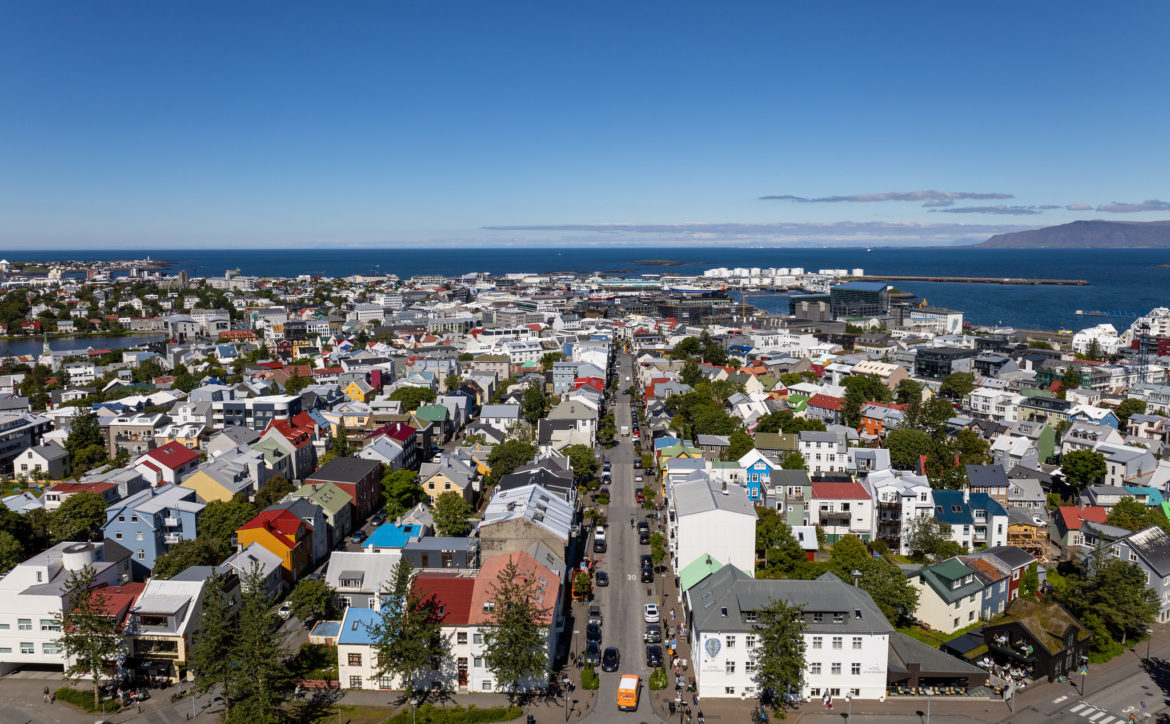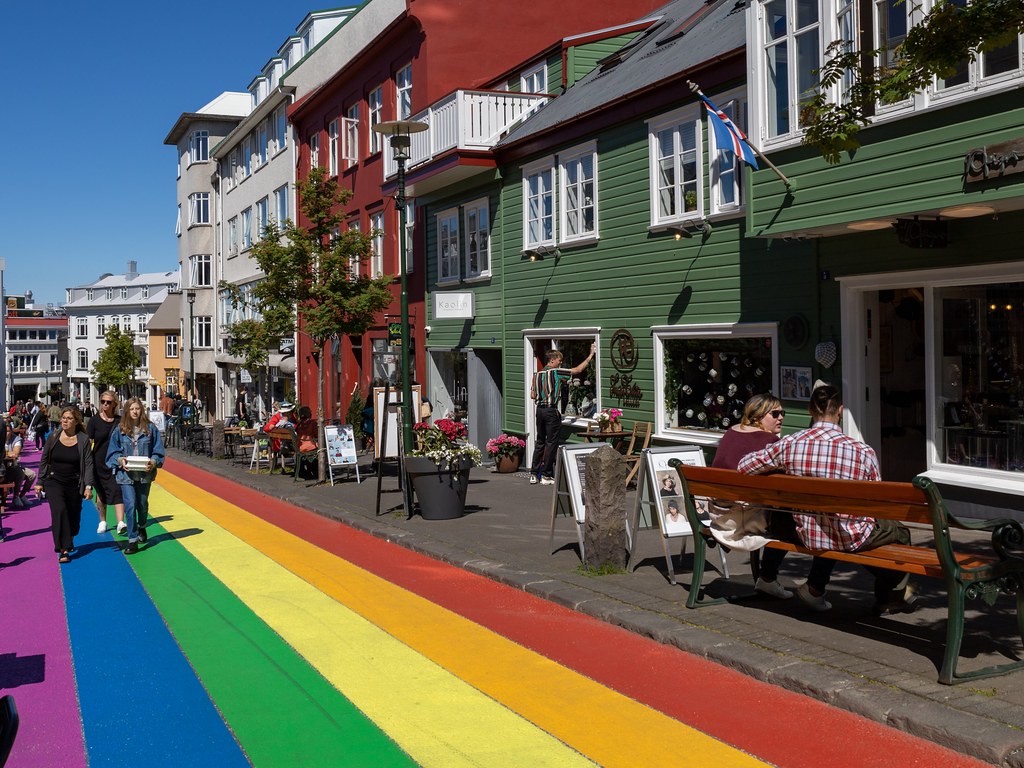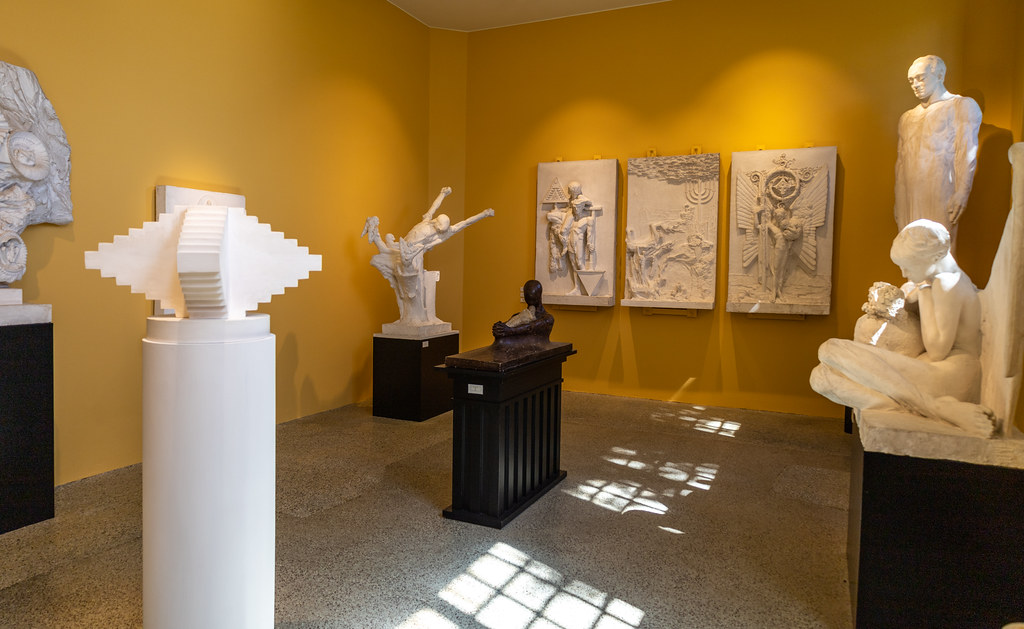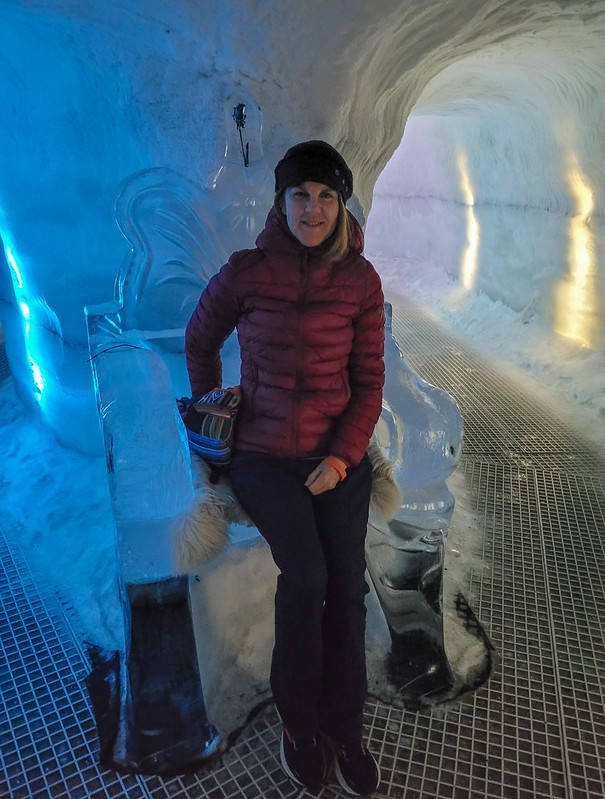Iceland’s capital city is like an outdoor museum with lots of street art, murals, architecture and sculptures. As a tourism hub, it offers much to see and do all afoot. With cold and dark winters, the colors of Reykjavik come alive among a thriving art scene. As an Acupuncturist-at-Sea, I enjoyed many days exploring it and love sharing insights. So, read on to learn about Reykjavik, Iceland highlights, taking you to the heartbeat of this creative culture.
The largest city in Iceland lies on the southwestern coast’s Faxafloi Bay, the largest bay in Iceland. It’s mostly spread out on the Seltjarnarnes peninsula. Reykjavik means “Smokey Bay” named after the geothermal vents all around it. Recently, Fagradalsfjall volcano, about 20 miles from Reykjavik has been erupting. It’s classified as a fissure eruption, which doesn’t typically create large explosions or send a lot of ash into the stratosphere.
Iceland’s famous Blue Lagoon and Sky Lagoon, are both less than an hour from Reykjavik. Even more, there are also numerous swimming pools in town and even the geothermal white, sandy Nautholsvik Beach.
As the first settlement established in 1785, it’s now Iceland’s largest city with almost 200,000 people. There’s an awesome culture here renowned for its thriving street art and music scene.
Check out my YouTube Video!
Reykjavik, Iceland
Travel Guide Highlights
Spectacular Street Art, Sculptures & Shopping
Reykjavik is an eclectic mecca for outdoor clothing and equipment. Don’t miss out on checking out the shopping streets, such as, Laugavegur, Bankastræti, Austurstræti, Lækjargata and Skólavörðustígur (Rainbow Street). I blissfully shopped amongst the gorgeous selection of local, handknit wool sweaters. There are unique styles of impeccable quality that cannot be found anywhere else.
Also, on Rainbow Street is the Magic Ice Bar & Gallery. The intriguing residential “Neighborhood of the Gods” takes you through the street names from Nordic religions. This is near the Hallgrímskirkja Church.
The Ingolfur Arnarson Sculpture by Einar Jonsson sits on a grassy hill along Laekjargata Street with benches and views. According to The Book of Settlements he and his crew were the first permanent settlers in Iceland. They appropriately named Reykjavik “Smoke Cove” because of the steam rising from the hot springs.
The iconic Sun Voyager sculpture is located seaside next to the Saebraut Road and Harpa Concert Hall. It offers a gorgeous backdrop of the harbor and view of Mt. Esjan. The artist, Jon Gunnar Arnason, intended for it to symbolize the promise of undiscovered territory, progress, freedom and of course, the sun.
Hallgrímskirkja Church
This towering expressionist-style white cement Hallgrímskirkja Church, opened in 1986 as a looming presence in central Reykjavik. In front of the church stands the grand statue of Leif Eriksson, who discovered North America in the year 1000 (nearly half a millennia before Columbus). The United States gifted this amazing sculpture. Also, many tourists gather here for selfies, so arrive early morning if possible.
As the largest church in Iceland, it’s named after the poet Halligrimur Petursson, who wrote the Passíusalmar (The Passion Hymns). The architect, Guojon Samuelsson’s design was inspired by the basalt columns at Svartifoss Waterfall on the South Coast of Iceland. Also, its colossal concert organ is 15 m in height, with 5,275 pipes.
From the top of this 74.5 m building is an epic 360-degree view of the city. I went up on a clear day and took the first photo in this article. Oskjuhlio Hill provides another panoramic view of Reykjavik.
Museum Hopping
On a rainy day, there are amazing museum hopping options in Reykjavik. Overall, the museums are mostly within walking distance. They include the following:
Árbæjarsafn Open-Air Museum
Perlan Museum
Whales of Iceland
National Museum of Iceland
The Iceland Phallological Museum
Saga Museum
Reykjavik Art Museum
National Gallery of Iceland
Einar Jonsson Museum
My favorites are the Perlan Museum and the Einar Jonsson Museum next door to the Hallgrímskirkja Church. This artist has had a strong influence on the Icelandic culture. The Einar Jonsson style is unique to Iceland, expressing the trend from early 20th century in sculpture and paintings. Also, don’t miss out on the free bronzed sculpture garden outside and behind this museum.
The Perlan Museum offers many interactive ways to learn about the unique ecosystems in Iceland. For example, it has an indoor ice cave, Northern Lights Show in a planetarium and Lava Show.
Icelandic Food and Eateries
Reykjavik Iceland Travel Guide
Reykjavik food choices are unique and delicious. For example, my favorite Bakery with the world’s best cinnamon rolls was at the colorful Braud & Co. I stopped here many times and always ordered whatever was still hot from the oven, which usually included delicious soft pretzels.
Another food I discovered was their Icelandic Thunder Bread. Honestly, it was the best rye bread that I ever tasted. It’s slightly sweet with molasses and brown sugar and is geothermally cooked. In addition, there are numerous flavors of fat-free Icelandic yogurt called skyr. Finally, don’t miss out on their famous and unique hot dogs. For example, the hotdog stand, Baejarins Bestu (The Town’s Best) evidently lives up to its name. I queued up here (expect a line) and loved mine with relish and mustard.
Related: Icelandic Thunder Bread – A Delicious, Sweet Rye Bread Geothermally Cooked
Local Hot Springs
Blue Lagoon, Sky Lagoon & Nautholsvik Beach
Most people have heard of the famous Blue Lagoon about an hour’s drive from Reykjavik. Its therapeutic aquamarine, mineral-heated waters include a world-class spa, cafe and even bar. Another awesome hot spring option is the Sky Lagoon, just a half hour drive from Reykjavik. Its waters are heated but not mineralized and it has a wonderful Infinity Pool, looking out at Flaxafloi Bay. I enjoyed both Blue and Sky Lagoon. If you are short on time, it’s more convenient to visit Sky Lagoon with shuttles quickly getting you there and back from Reykjavik.
Also, there are numerous heated swimming pools in Reykjavik, for example, Laugardalslaug is the largest and most popular. Nautholsvik Geothermal Beach is a great place for people who love swimming in the ocean or sunbathing in the sand. The beach offers changing facilities and showers, steam-baths and hot tubs. Hot water is pumped into the man-made lagoon and creating an invigorating swimming area averaging between 15°-19°C in summer.
Whale Watching
There are numerous companies that take you out on Flaxafloi Bay Whale Watching Tours near Reykjavik. The best time for whale watching is April – September. Flaxafloi Bay is the largest bay in Iceland, relatively superficial and great location for whales to feed. Iceland offers some of the best opportunities in the world to see unique species, such as, Minke, Humpback, Blue, Fin, Sei and Bottlenose.
About a 45-minute boat ride from Reykjavik the whales feed during these crucial months. I enjoyed my whale watching tour with Arctic Adventures, seeing dozens of whales, dolphins and even puffins. Mostly, we saw the Humpbacks and Minkes surfacing and feeding.
Day Trips from Reykjavik
Reykjavik is a wonderful place to experience a good dose of Icelandic culture. Overall, the colors of this artistic community reflect in the exquisite street art, murals, sculptures, shopping and eateries. Even more it’s an incredible hub for exploring the Reykjanes peninsula. Popular day trips include adventures, such as, the Golden Circle, Blue or Sky Lagoons and various hotspots on the Reykjanes peninsula.
Read More on Iceland Day Trips!
Spectacular Iceland Golden Circle Itinerary & Horse Show
Iceland’s Blue Lagoon Highlights for a Spa Day
Geothermal Reykjanes Peninsula – Top Hotspots to See













